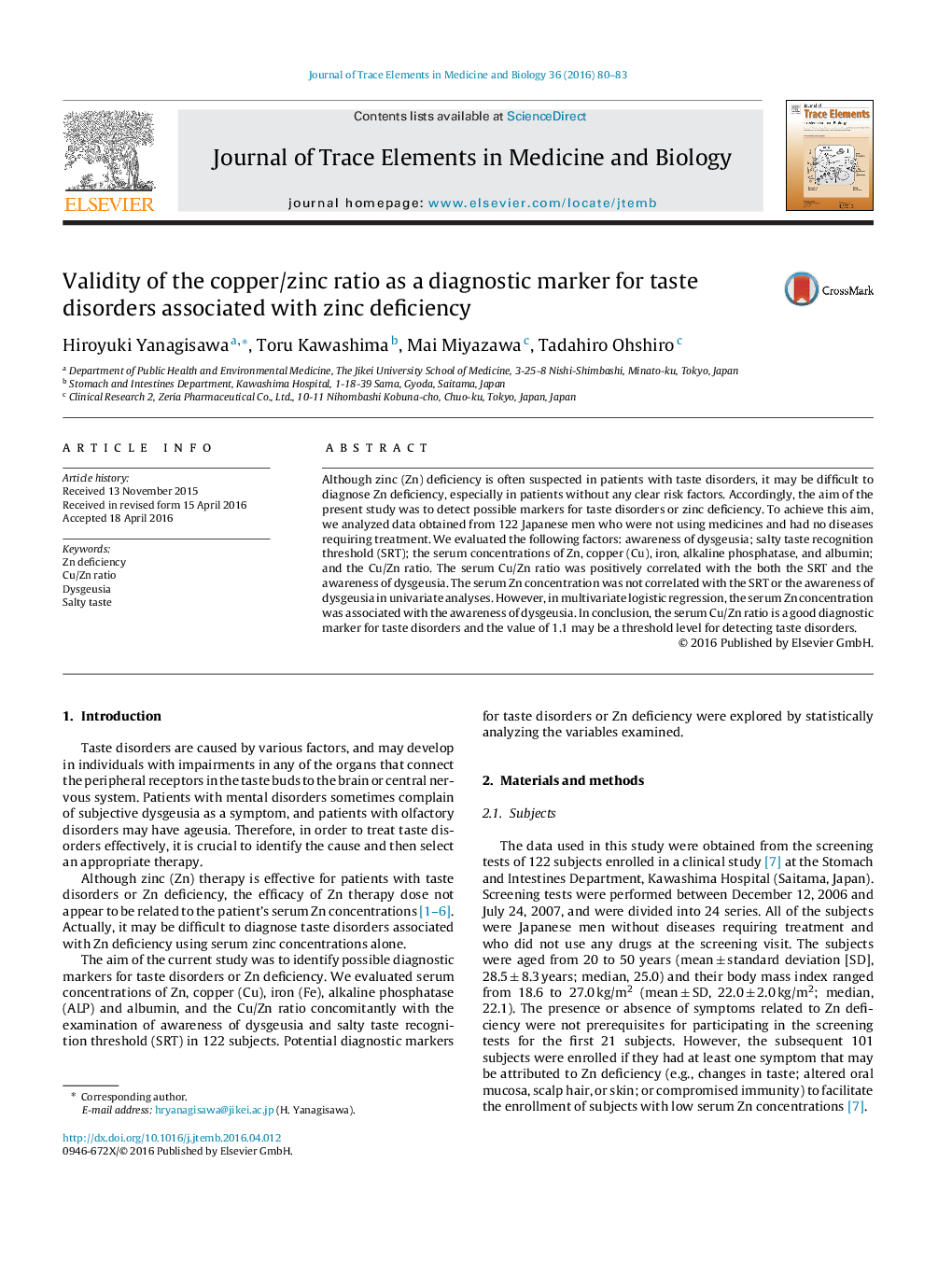| Article ID | Journal | Published Year | Pages | File Type |
|---|---|---|---|---|
| 7639229 | Journal of Trace Elements in Medicine and Biology | 2016 | 4 Pages |
Abstract
Although zinc (Zn) deficiency is often suspected in patients with taste disorders, it may be difficult to diagnose Zn deficiency, especially in patients without any clear risk factors. Accordingly, the aim of the present study was to detect possible markers for taste disorders or zinc deficiency. To achieve this aim, we analyzed data obtained from 122 Japanese men who were not using medicines and had no diseases requiring treatment. We evaluated the following factors: awareness of dysgeusia; salty taste recognition threshold (SRT); the serum concentrations of Zn, copper (Cu), iron, alkaline phosphatase, and albumin; and the Cu/Zn ratio. The serum Cu/Zn ratio was positively correlated with the both the SRT and the awareness of dysgeusia. The serum Zn concentration was not correlated with the SRT or the awareness of dysgeusia in univariate analyses. However, in multivariate logistic regression, the serum Zn concentration was associated with the awareness of dysgeusia. In conclusion, the serum Cu/Zn ratio is a good diagnostic marker for taste disorders and the value of 1.1 may be a threshold level for detecting taste disorders.
Keywords
Related Topics
Physical Sciences and Engineering
Chemistry
Analytical Chemistry
Authors
Hiroyuki Yanagisawa, Toru Kawashima, Mai Miyazawa, Tadahiro Ohshiro,
